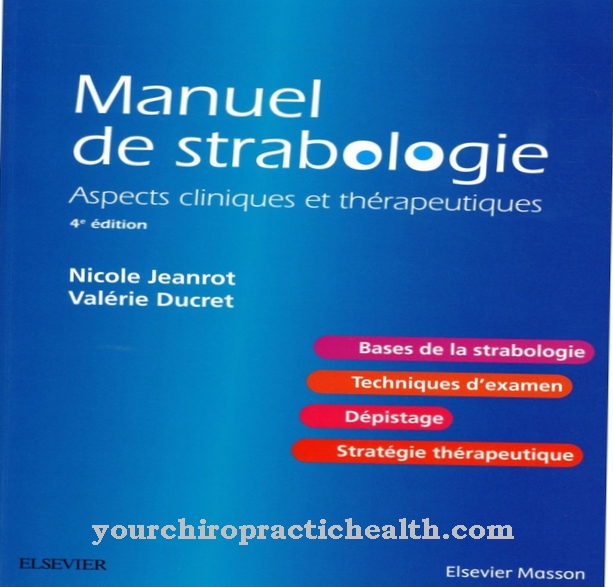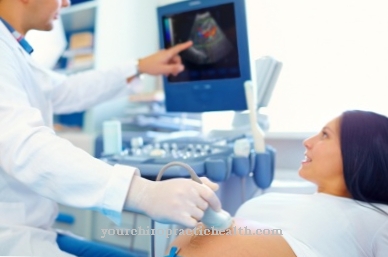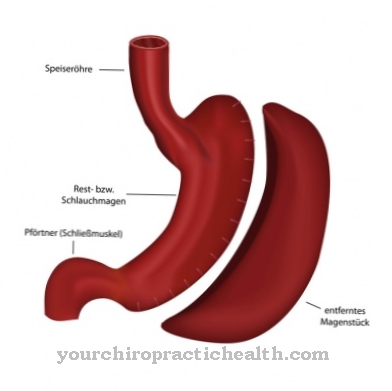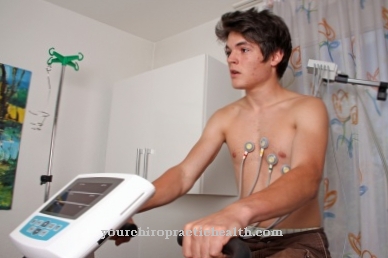The parenteral nutrition is an artificial, venous feed when the human digestive tract no longer functions normally as a result of an accident or illness. Ready-to-use infusion solutions are now available for parenteral nutrition therapy that contain all essential ingredients, such as protein, fat, sugar, vitamins, minerals or trace elements in sufficient quantities.
What is Parenteral Nutrition?

The term parenteral comes from the Latin language and means bypassing the gastrointestinal tract. The normal supply of nutrition via the mouth to the esophagus, the stomach and the intestines is thus circumvented by parenteral nutrition.
The patient is no longer able to take in food independently and feed it to his digestive system. There can be many reasons for this in the form of congenital or acquired diseases or accidents. This form of artificial nutrition can also take place at home in the case of permanently dependent patients after a briefing by specialist staff.
The vast majority of the patients treated in this way are, however, inpatients in the clinic. Depending on the findings, parenteral nutrition may only be necessary temporarily, but in quite a few cases also permanently, in order to ensure the patient's survival. Parenteral nutrition is subject to certain quality guidelines in accordance with the relevant medical associations, which are guaranteed by certificates. The focus is on patient safety when it comes to the supply of food that is administered by a third person, usually nursing staff, bypassing the gastrointestinal tract.
Function, effect & goals
In parenteral nutrition, all the necessary nutritional components reach the blood as the smallest building blocks via a venous access. The body then converts these building blocks of fats, proteins and carbohydrates into energy for the body's cells just as quickly and efficiently as would be the case with normal digestion.
Normally, in healthy people, the nutritional components are absorbed into the blood through the digestive tract, starting with the oral cavity, continuing in the stomach and mainly in the intestine. This mechanism is partially or completely disturbed in patients who require parenteral nutrition. The main indications that require parenteral nutrition therapy are extensive end-stage tumor diseases, acute organ failure, severe infectious diseases, congenital malformations of the organs, metabolic imbalances, multiple trauma, burns, sepsis or intestinal obstruction.
Even patients after chemotherapy are sometimes temporarily dependent on artificial nutrition directly via a vein due to the damage to the mucous membrane of the gastrointestinal tract. Parenteral nutrition therapy pursues clearly defined goals that are strictly oriented towards the patient's well-being. Restoring or maintaining health is the top priority, but also ensuring basic needs in the form of food intake. Furthermore, the maintenance of mobility, the possibility of participating in social life, maintaining and building up one's own body substance, covering the individual energy needs as well as the treatment of malnutrition or malnutrition, for example in the presence of anorexia or bulimia.
In advanced stages, tumor diseases or anorexia often lead to life-threatening situations due to malnutrition. In such cases, parenteral nutrition can be provided by a judge, even without the patient's specific consent. Parenteral nutrition is always tailored to the needs of the individual case of illness. First of all, the patient's body weight is used to calculate how high the external energy supply needs to be.
The aim is to ensure a balanced diet in the form of artificial food intake bypassing the gastrointestinal tract. Many pharmaceutical manufacturers offer infusion solutions for parenteral nutrition with precisely defined compositions of nutrients. These can be used individually or combined or mixed with other solutions. The general, current condition of the patient, including age, height and weight, is always decisive for the best parenteral nutrition.
However, it is not just about the supply of nutrients, but also about the supply of sufficient fluids. This is because patients with swallowing disorders, such as dementia or multiple sclerosis, are unable to drink independently.
Risks, side effects & dangers
While parenteral nutrition is used as a long-term therapy, there are a number of risks, side effects and also dangers that can have a direct negative impact on the patient's health. Most problems related to parenteral nutrition arise when hygiene guidelines are not properly followed.
When installing infusion pumps, you should always work germ-free and follow the guidelines for disinfection with aftercare. In the home, pets should be locked out during preparation, workplaces should be disinfected, jewelry should be removed and hands should be thoroughly cleaned. Nursing aids that are required to create aseptic conditions are covered in full by statutory health insurances as part of parenteral nutrition therapy.
Especially at the beginning of parenteral nutrition, venous infiltration of the smallest food components can lead to side effects in patients. These manifest themselves, for example, in skin changes, chills, cramps, headaches, malaise, shortness of breath or increased body temperature. In these cases the infusion must be stopped immediately and the doctor informed. Infusion solutions for parenteral nutrition must be stored properly at home, i.e. cool and dry and not above 25 °.
Expired infusion solutions must never be used again. A swelling of the neck and arm on the catheter-bearing side of the body often indicates inflammatory processes at the puncture site. The venous access must then be professionally cleaned or completely renewed.
























.jpg)



